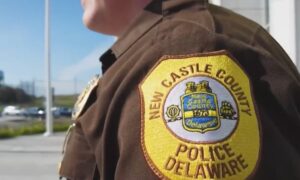Leaving military service doesn’t mean leaving everything behind. For veterans, paperwork might not be the first thing on your mind during transition—but it’s one of the most important.
It doesn’t matter if you’re filing for VA disability benefits, applying for a home loan, or even getting a discount at a restaurant; the documents tied to your service carry serious weight.
The catch? You need to know which ones matter, why they matter, and how to get them if you don’t already have them in hand.
Let’s get into the eight essential military documents every veteran should be familiar with. This isn’t just about paperwork—it’s about making sure you’re recognized, supported, and set up for everything you’ve earned.
Table of Contents
Toggle1. DD Form 214 – Your Proof of Military Service

The DD214, or Report of Separation, is your MVP. It’s the official document you receive when separating from active duty, and it includes just about everything a government agency or civilian employer would need to know:
- When and where you served
- Your rank at discharge
- Type of discharge (e.g., honorable, general)
- Awards, medals, and major assignments
Why It’s Critical
If you apply for VA healthcare, disability compensation, GI Bill education, or a VA-backed home loan, they’ll ask for this form first.
Additionally, DMDC Military Verification can be used to confirm your active duty status when your DD214 is unavailable.
Where to Get It
- If you’re recently separated, log into the VA eBenefits portal—you might find it there.
- Otherwise, request it from the National Archives using Standard Form 180 or online via eVetRecs.
Pro Tip
Spot an error? The DD215 is the correction form—and it carries just as much legal weight.
2. Official Military Personnel File (OMPF)
Your OMPF is the full paper trail of your military career. We’re talking:
- Enlistment records
- Duty stations
- Performance reviews
- Training certs
- Awards, assignments, and more
It’s your service, in writing—from start to finish.
Why It’s Important
You might need this to correct or supplement your DD214, verify eligibility for certain benefits, or provide documentation in legal or administrative settings.
Where to Get It
- Use Standard Form 180 to request it from the National Archives.
- If you’re recently separated, you may have partial access via eBenefits.
Quick Note
These records are protected for 62 years after separation. But if you’re the veteran—or next of kin—you’ve got access. After 62 years? They’re open to the public.
3. Military Medical Records

These are your health records from active duty—doctor visits, diagnoses, surgeries, mental health notes, vaccines, and anything else health-related during service.
Why They Matter
If you’re applying for VA healthcare or trying to claim a service-connected disability, your case is only as strong as the proof. These records often make or break a claim.
How to Get Them
- For older records: request through eVetRecs.
- For recent service: contact your branch’s personnel office.
- Already enrolled in VA healthcare? They might already have your records—ask first.
Key Detail
Medical records are stored separately from your OMPF, so don’t assume they’re included.
4. DD Form 256 – For Reservists
Issued to Reserve members upon separation, the DD256 confirms your honorable service.
Why It’s Useful
It’s often required when applying for benefits, jobs, or veteran group memberships. And if you ever need to request a full DD214, this can be used to do it.
Where to Get It
- Contact your Reserve component’s personnel center.
- Or use Standard Form 180 through the National Archives.
5. NGB Form 22 – For National Guard Members

Think of this as the National Guard’s equivalent of a DD214. It includes:
- Service dates
- Awards and decorations
- Type of discharge
Why You’ll Need It
VA benefits? Yes. State-level veterans’ benefits? Yes. This is your proof of service if you were in the Guard, plain and simple.
How to Access It
- Contact your state’s National Guard Adjutant General’s office.
- Or use SF-180 to request from the National Archives.
6. VA ID Card
Issued by the Department of Veterans Affairs, this card identifies you as a veteran eligible for VA services.
Why It’s Handy
- Needed to check in at VA clinics and hospitals
- Can be shown for discounts or access to certain veteran-only services
How to Apply
- Visit your local VA office or apply online via the VA website.
- You’ll need to submit a DD214 and meet eligibility standards.
Types of VA Cards
- Veteran Health Identification Card (VHIC)
- Veteran ID Card (VIC) for general proof of veteran status
7. Veterans Organization Membership Cards

Cards from groups like the VFW, American Legion, or DAV. Not official government documents, but still useful in a lot of scenarios.
Why You Might Want One
- Gain access to veteran discounts
- Tap into a strong network of support, resources, and community
How to Get One
Join the organization and provide your DD214 or other proof of service.
Bonus Tip
Memberships can also help if you ever need supporting statements from fellow veterans for a VA claim.
8. Military Awards and Decorations
Whether you earned a Purple Heart, Bronze Star, or Army Commendation Medal, your awards say a lot about your service.
Why They’re Valuable
- They can back up benefit claims when other records are missing
- They’re often used as secondary proof if you were affected by the 1973 fire at the National Personnel Records Center
- And—frankly—they matter. Pride, honor, legacy.
How to Replace or Verify Them
Reach out to your branch’s awards office or the National Archives. You can request replacements if you’ve lost your medals or need official documentation.
What If Your Records Were Lost?
You’re not alone. The 1973 fire at the National Personnel Records Center in St. Louis wiped out millions of Army and Air Force records. If you’re affected, you’ll need to get creative with proof. Options include:
- Payroll records or old tax filings
- Photos of you in uniform
- Buddy statements
- Newspaper clippings, obituaries, or public service announcements
A Quick Look at Where to Go
| Document | Where to Request | Notes |
| DD214 | VA eBenefits, National Archives | Use SF-180 or eVetRecs |
| OMPF | National Archives | Restricted for 62 years unless you’re the veteran or next of kin |
| Medical Records | eVetRecs, branch personnel center | Stored separately—don’t assume they’re with your OMPF |
| DD256/NGB22 | Personnel command or State Guard office | Needed for VA and state-level benefits |
| VA ID Card | VA.gov or local VA office | Proof of status, needed for healthcare access |
| Awards | National Archives or service branch | Can be replaced even decades later |
Final Thoughts
If you’ve worn the uniform, you’ve earned more than thanks—you’ve earned rights, services, and benefits that can change your life after discharge.
But everything starts with the paperwork. Knowing where your key documents are—and how to get them if you don’t—can be the difference between a smooth transition or months of red tape.
So don’t wait. Check your files. Make copies. Store them somewhere safe. If anything’s missing, start the process to request it. Whether you’re dealing with the VA, trying to land a job, or planning a burial at a national cemetery, those forms are what you need.
Related Posts:
- Armed Forces Organizations, 500+ Veterans Announce…
- Who Do You Contact If You Have Questions About…
- What Is the Maximum Amount You Can Get for a Small…
- How to Survive as a Student in the United States…
- Military Service Discrimination - What It Looks Like…
- Top 20 Most Dangerous Cities in California for 2025…








